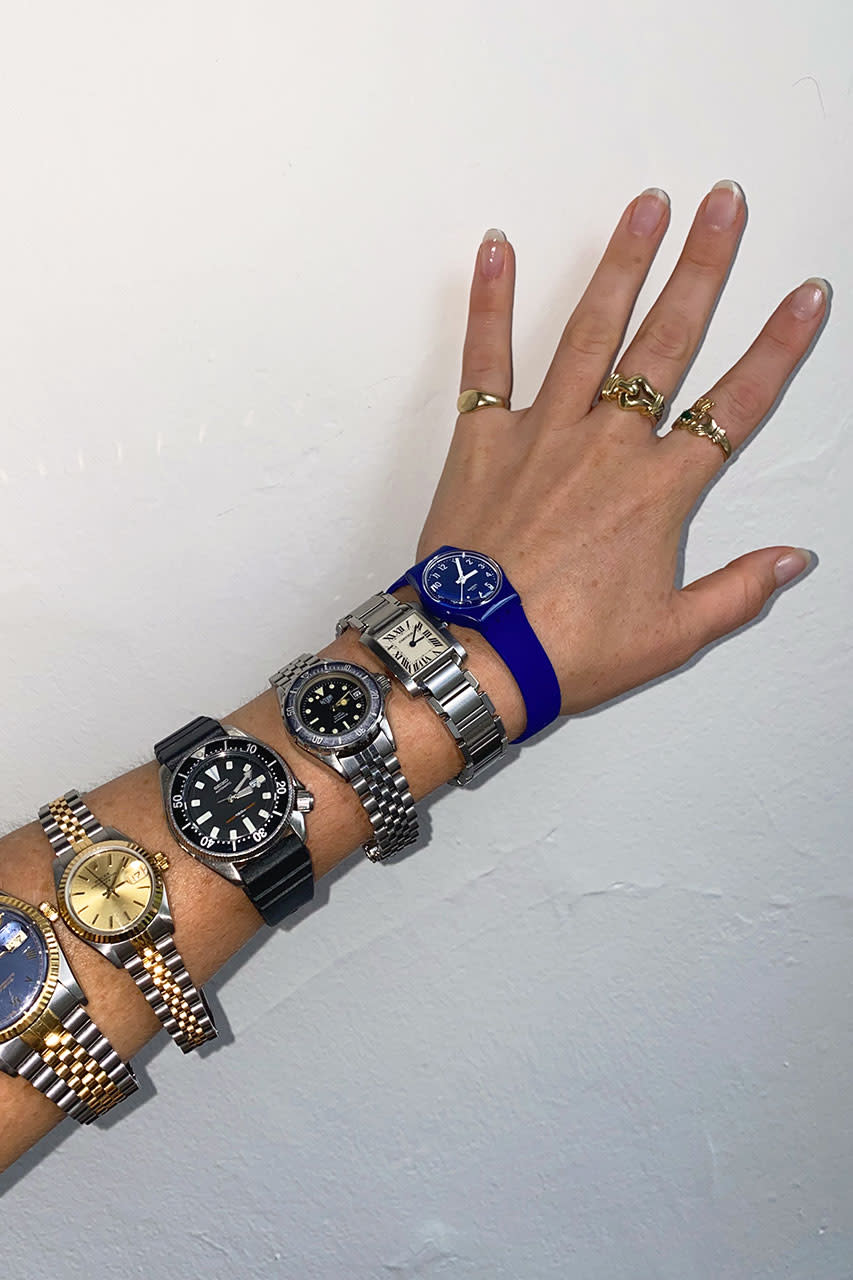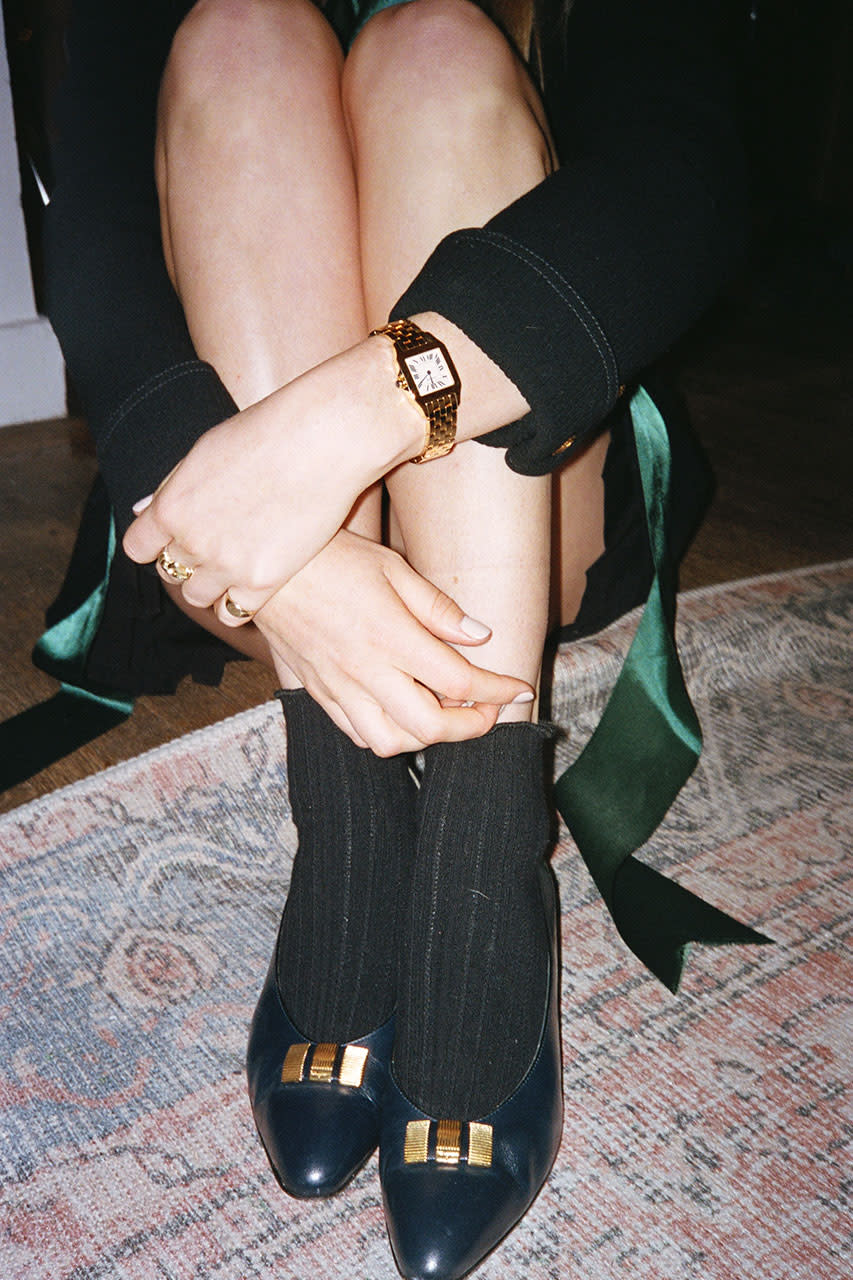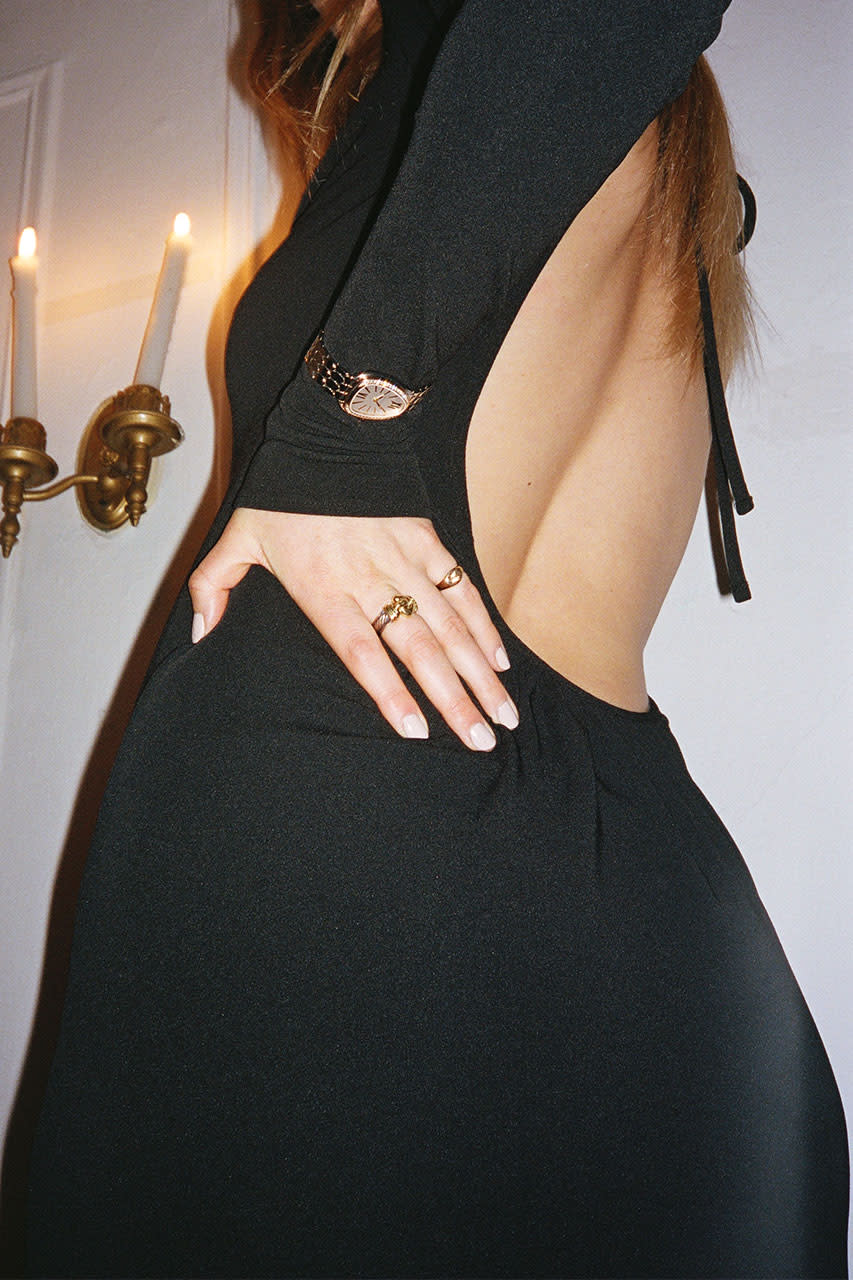Are Women the Future of the Watch Industry? Brynn Wallner Thinks It's About Time
- Oops!Something went wrong.Please try again later.
It's not an exaggeration to say the watch industry—like many—has a storied history of being a male-dominated space. If I even so much as mention the word "Rolex," chances are your imagination immediately conjures the image of a chunky timepiece framed by cufflinks on a hairy, obviously-male wrist. But why?
"I feel like in the Mad Men-era, maybe up to the '90s, ads were pretty focused on positioning watches as gifts that men could buy for women. I think they were pretty sexist; not with bad intention, it was just that ads for watches were very male-focused," explains Brynn Wallner, founder and chief vibe curator of Dimepiece—a platform that aims to flip the narrative towards perspectives that have long been overlooked in the watch world. "You know those famous Rolex ads?" she asks. "They're really cool and so smart, like 'if you were climbing here, tomorrow, you'd wear Rolex,' and it's a picture of Mount Everest. Or, 'If you were negotiating here, you would wear Rolex,' and it's a picture of the UN in Geneva," she continues. "The series of ads have all these places that evoke power and adventure, but obviously the 'you' in this is a man."

That's exactly why Wallner came up with the idea for Dimepiece. While working in the editorial department at Sotheby's, she was tasked with producing content for its watch division to appeal to a younger audience. She admits she knew literally nothing about watches beforehand, but soon enough, she found herself trapped in an inevitable internet rabbit hole, learning as much as she could about luxury timepieces.
She also noticed, pretty quickly, how exclusionary the space actually was toward women and others who didn't hit the checklist of wealthy, white and male. "I was lucky enough that I could see these objects in person," she notes, referencing her role at the famed auction house. "I was like…wait, watches are sick!? How come nobody told me?" she laughs. "Then I was like… where are the women? How come there's no history of certain women wearing watches? In all these stories I read about heavy-hitter watches, they don't mention women once."
At the height of the pandemic, Wallner was let go from Sotheby's but she put her free time, newfound passion for watches, and—crucially—her severance, to good use. "I treated it as my own project; I was highlighting people in culture wearing watches that were fun and different to what I was used to seeing in advertisements," Wallner says, referencing the initial moodboard-esque Instagram where she began sharing her research and vision. "I was teaching myself alongside my audience as it grew; it was like we were all learning about this together."

The fully-fledged Dimpiece editorial platform followed shortly after. "It was really important for me to be more than just a curated feed but a foundation of education," she shares, noting that discourse with Dimepiece's growing community was as essential in furthering her knowledge. “Social media is a really good petri dish," Wallner reflects. "Really early on in Dimepiece, I posted a video of Cardi B with an iced-out custom Patek Phillipe Nautilus because I was like, 'Wow, I'm obsessed with this energy!' And people were like, 'It's a custom aftermarket piece. It's gonna depreciate in value, it already has.' I was like 'Oh okay, I didn't know that.' I thought more diamonds meant more money, right? I took all of this information and then I had to teach myself about it."
What's obvious across both Dimepiece's Instagram and website, is just how accessible and, frankly, cool, the watch industry seems through Wallner's refreshingly unique lens. Handy breakdowns of watch anatomy are paired with advice for first-time watch buyers—all next to inspo imagery featuring the likes of Yoon Ahn, Bad Bunny, Rihanna, and Reese Witherspoon as Elle Woods. The tone of voice (lighthearted, conversational, and irreverent), makes you feel like you're in on the party—whether you're on the guestlist or not. It's worlds away from the elite, invite-only vibe of the traditional luxury watch space.

"My approach is just staying true to my voice and to what I think is important. I'm doing free marketing for a lot of these brands and sometimes I'm doing it better than they can," Wallner says when I ask about her process for selecting the stories and faces that show up on Dimepiece. "A lot of Black artists set the trend of what's hot in watches. The first time I ever heard about Audemars Piguet was through Jay Z. They push the [watch] industry forward in terms of trends, but that influence seems to be really under acknowledged. I'm just reflecting on what's going on in culture right now and it seems really effortless for me to include Tyler the Creator who's wearing his tiny little Cartiers."
Brynn is the first to admit that as a CIS white woman, she doesn't exactly represent a huge shift in diversity when it comes to the makeup of the watch industry. "People say 'It's so nice to have you in the industry, you're such a fresh face,' and I'm like…I'm not different," she laughs. "But it's been so male dominated for so many years that I do represent something new."
She's not the only one; there's a whole new cohort of women in the space, primed to shake up the centuries-old industry and shove it straight into the 21st century. "Girls O'Clock is doing a great job; I see her videos and she's educating this whole [Gen-Z] demographic and talking to them in the way they want to be talked to," Wallner gushes. "Then there's my podcast co-host Malaika Crawford and my friend Zoe Abelson who's a watch dealer; another super male-dominated segment of the industry. She's killing it as a watch dealer," she adds excitedly. "I think it's really important to see women involved on that side of the business as well. Not just the content, but actually in the weeds, selling these objects and being in that economy."

